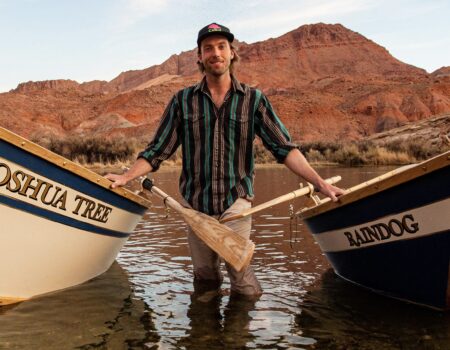In addition, participants must:
The above criteria, if not met, can disqualify a person from participating in a GCY expedition. These safety criteria exist for all participants. The criteria is not meant to discriminate against any physical or mental disability; it is applied uniformly to all potential trip participants, regardless of the presence or absence of a disability. There may be additional issues not listed here that may preclude participation in a GCY trip, including menu restrictions that GCY cannot safely accommodate. GCY is committed to making reasonable modifications to any trip for any persons so long as they do not fundamentally alter the nature of the trip. These criteria can be expanded as deemed necessary by staff or the medical or legal professionals assisting GCY. GCY reserves the right to exercise final authority over which individuals can or cannot join a trip.
The following paragraphs further inform all potential participants of the expectations to promote a safe and enjoyable experience for everyone on a trip. There may be requirements, whether physical or mental, that are not specifically “essential eligibility criteria”, they are explained here to help participants understand the reality of being on a wilderness expedition. Our primary goal is to minimize risks associated with adventure trips in wilderness. The trip involves physical exertion and exposure to the elements, including cold water and the potential for heat, sun, wind, rain and snow. We have experience accommodating a wide range of physical abilities and/or health conditions. However, individuals with physical/mental limitations or ailments that interfere with the realistic encounters on wilderness river expeditions can endanger themselves, other participants, and the guides. GCY advises you to consult a doctor regarding medical or health conditions that could impact your ability to participate in this outdoor adventure.
It is important that each trip participant take an active role in their own safety. All participants will encounter unfamiliar and dynamic wilderness conditions. It is critical to pay attention at all times, be aware of surroundings, and avoid taking unnecessary risks. Even a non-threatening injury in a wilderness setting can become a major emergency, and can endanger the entire group. Swimming or hiking alone is not allowed. Using common sense, and following the explicit instruction of your guides is essential.
River trips, particularly those involving whitewater, are inherently risky. The risk of a trip is part of what makes it an exciting adventure. It is important to stay calm as a non-voluntary swimmer. The odds of becoming a non-voluntary swimmer change with the classification of a rapid, boat selection and environmental factors. Swimming in whitewater is more difficult and physically challenging than swimming in flat water. Swimming in cold water can cause a gasping effect on your respiratory system. Swimming in cold water quickly saps energy and decreases muscle function. While guides are highly trained and will do their best in a rescue situation, a successful rescue is greatly improved by a swimmer who actively participates and follows directions under stress.

